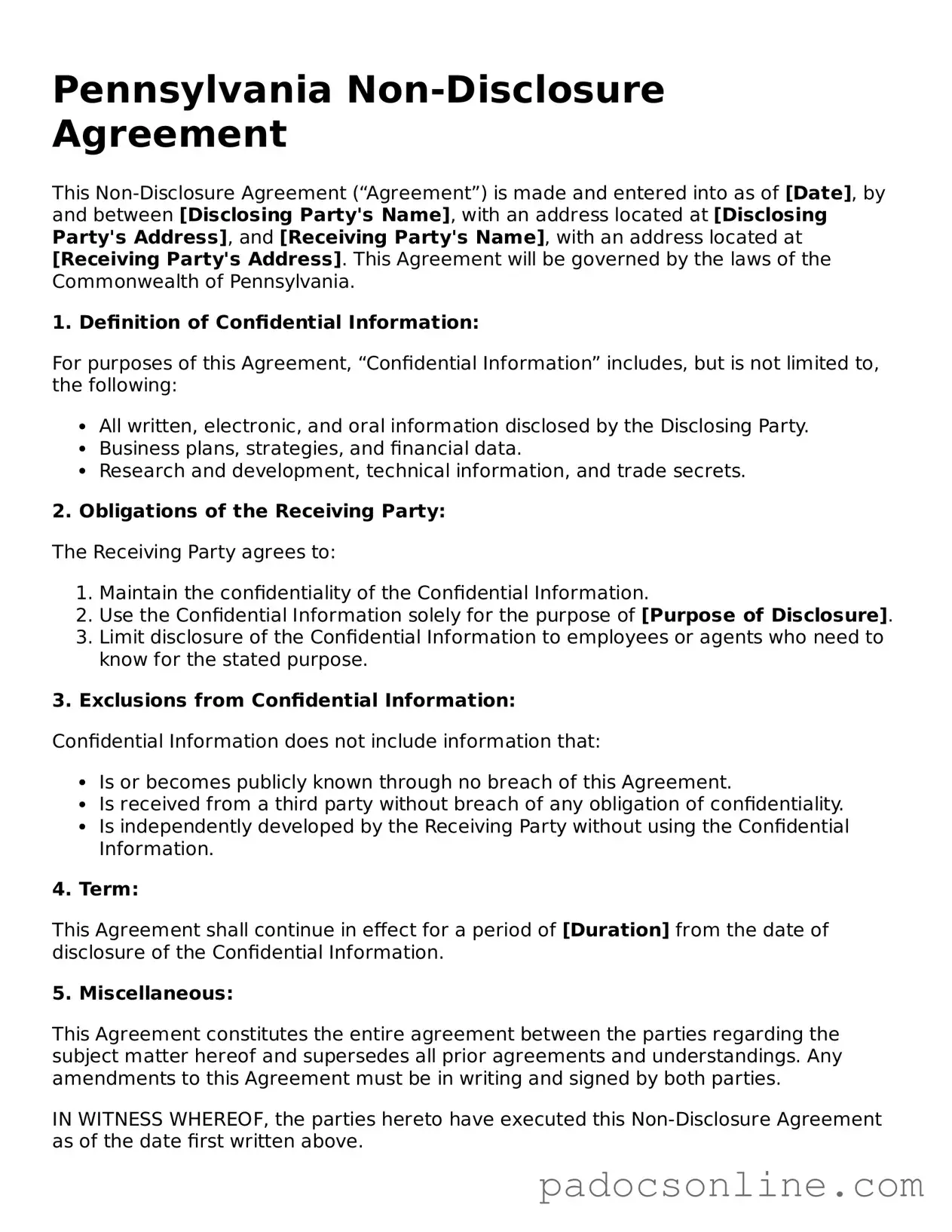Legal Non-disclosure Agreement Document for the State of Pennsylvania
A Pennsylvania Non-disclosure Agreement (NDA) is a legal document designed to protect confidential information shared between parties. This form establishes the terms under which sensitive information can be disclosed and ensures that it remains private. Understanding its components is essential for anyone looking to safeguard their proprietary data.
To take the next step in protecting your information, fill out the form by clicking the button below.
Fill Out My Form Now
